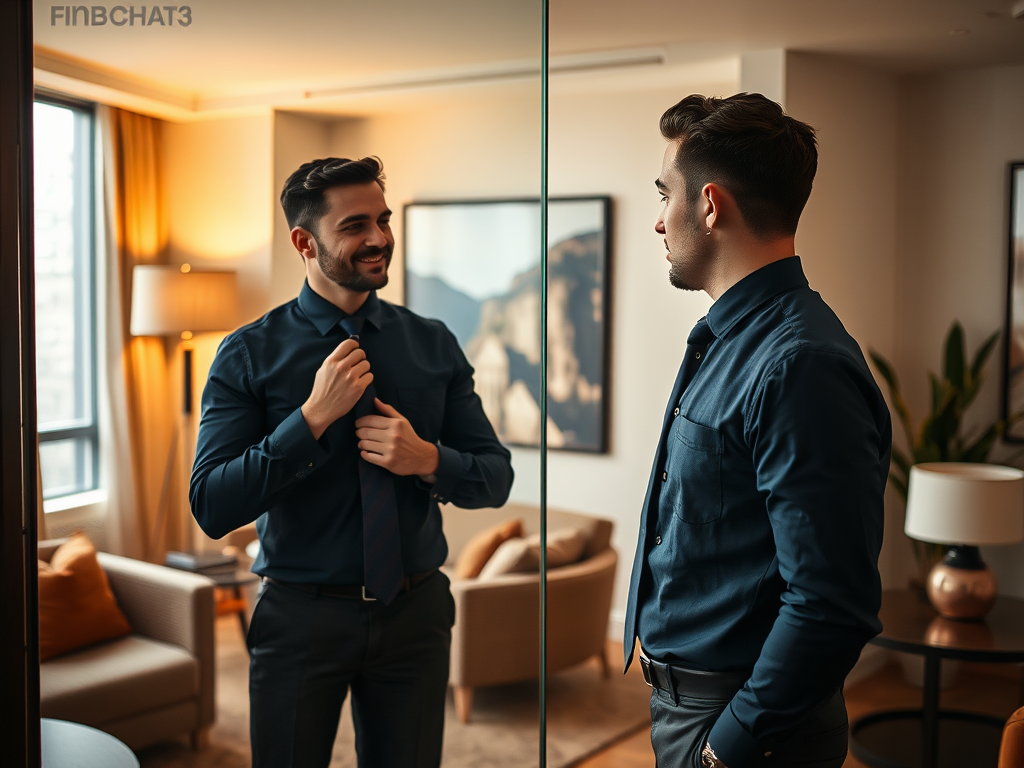Dressing for Success: How Fashion Can Boost Professional Reputation
In today’s fast-paced professional landscape, the way you present yourself can be just as important as your skills and experience. The notion of “dressing for success” has transformed from a mere cliché into a vital strategy for gaining respect, confidence, and opportunities in your career. As strange as it may sound, the way we dress influences not just how others perceive us but also how we perceive ourselves. Fashion isn’t just skin deep; it’s a form of non-verbal communication that conveys messages about our personality, competence, and professionalism. By mastering the art of dressing, you have the power to impact your professional reputation positively. This article will explore how fashion can significantly enhance your professional standing and help you navigate workplace dynamics.
Understanding the psychological impact of attire is key to making strategic fashion choices in your workplace. Studies show that what we wear affects our emotions and behaviors—a phenomenon known as “enclothed cognition.” For instance, sporting formal attire can increase feelings of confidence and authority. When we dress well, we tend to perform better in tasks that require focus and concentration. This suggests that the clothes we wear can influence our mental states, making it essential to choose outfits that inspire confidence. This connection between fashion and psychology plays a fundamental role in your professional success.
The Psychology of Clothing

When discussing the psychological implications of clothing, it’s crucial to understand how what we wear can affect not only how we feel but also how we act. Often, putting on a tailored suit or a professional dress can transform your mindset from casual to authoritative. The idea of enclothed cognition emphasizes this relationship; it implies wearing certain types of clothing can activate specific mental associations. For example, someone wearing a lab coat could perform better on tasks requiring focused attention due to the association with authority and professionalism.
Enclothed cognition explains that the symbolic meaning of clothing impacts how we function and react in professional scenarios. The clothing we wear can serve as a powerful tool for self-expression while simultaneously influencing our interactions with colleagues and clients. Therefore, being mindful of your outfit choices can contribute to achieving your professional goals. The clothing itself may be aesthetically pleasing, but understanding how these clothing choices play a part in your overall professional demeanor is equally important.
Dress Code and Workplace Culture

Every workplace has its own unique culture, and comprehending these nuances can help professionals dress appropriately. Adapting your attire to fit the environment is fundamental for integrating into workplace dynamics successfully. Understanding a company’s dress code can mean the difference between blending in and standing out in an unfavorable way. Ultimately, your clothing can either communicate respect for the organization or suggest a lack of understanding of its values.
It is valuable to categorize dress codes to align your fashion choices effectively. Some common dress code categories include the following:
- Business Formal: Includes tailored suits and professional dresses, often accompanied by dress shoes.
- Business Casual: Combines professional elements with a more relaxed atmosphere; shirts without ties and dressy slacks.
- Casual: More relaxed attire, allowing jeans and sneakers as long as they are clean and presentable.
Familiarizing yourself with these styles can help you choose clothes that honor the professional environment while expressing your personal flair. This awareness promotes not only your image but also your engagement with peers and superiors.
Building Your Professional Wardrobe
Cultivating a professional wardrobe is not just about having the right clothes but also about creating versatile pairs that can work across different functions. Smart investment in wardrobe staples can enhance your professional allure, ensuring you always look put together. A well-thought-out wardrobe showcases your understanding of professionalism while allowing for personal expression. Start by understanding the essentials every individual should have, regardless of gender or career field.
Here’s a quick list of essential items to consider adding:
- A well-fitted blazer for a polished appearance
- Quality dress shoes to elevate any outfit
- Classic slacks or skirts that can match with different tops
- Simple button-up shirts or blouses for a versatile look
- A professional handbag that complements your outfits
| Item | Importance | Color Recommendations |
|---|---|---|
| Blazer | Enhances professionalism | Black, Navy, Gray |
| Dress Shoes | Completes outfits | Brown, Black |
| Classic Slacks/Skirt | Versatile pairing option | Neutral colors |
Adding these staples to your wardrobe ensures you are prepared for various scenarios, from corporate meetings to casual office days. Choosing timeless pieces allows you to transition effortlessly between occasions while maintaining a professional edge.
Fashion Trends in the Workplace
Staying informed about fashion trends can showcase your adaptability in a professional environment. While it’s crucial to maintain professionalism, incorporating current styles can reflect your modern sensibility and creativity. However, the key lies in balancing trendiness with a polished appearance. Here are some tips to follow:
- Choose trends that align with your industry’s standards.
- Incorporate trendy accessories to add a fresh touch.
- Mix classic and trendy pieces for a balanced look.
Dressing for Different Scenarios
The importance of situational dressing cannot be overstated. Understanding the context allows you to make educated choices that reflect professionalism tailored to specific events. Whether preparing for an interview, meeting, or networking event, your attire can significantly influence your success in these scenarios. For example, wearing sophisticated attire to a job interview can make a great first impression.
An effective wardrobe can enhance your presence in various professional settings. Here’s a breakdown of what to wear:
- Interviews: Opt for business formal; a tailored suit or professional dress is recommended.
- Meetings: Choose business casual attire to strike a balance between formal and approachable.
- Networking Events: A smart-casual outfit helps initiate conversations while showcasing your personality.
Conclusion
In conclusion, the vital connection between fashion choices and professional reputation cannot be overlooked. Investing time and thought into your clothing can greatly influence how you are perceived in your workplace. Your fashion choices are an extension of your personal brand, speaking volumes before you even utter a word. The clothes you wear can inspire confidence in yourself and resonate with colleagues and clients. No longer can dressing well be seen as superficial; it is an integral aspect of professional success worth mastering. With the right mindset and wardrobe, you can effectively enhance your professional reputation and create countless opportunities for growth.
Frequently Asked Questions
- How does clothing affect a person’s confidence? Clothing can enhance self-esteem and influence how we perceive ourselves and how others perceive us.
- What are some key pieces every professional should have? A well-fitted blazer, quality dress shoes, and versatile slacks or skirts are essential.
- How can I dress professionally on a budget? Focus on thrift stores, sales, and versatile pieces that can be mixed and matched.
- Is it ever acceptable to dress down in a professional setting? In some creative industries, a more relaxed dress code may be accepted, but always ensure it aligns with your company’s culture.
- What role do colors play in fashion choices for work? Colors can evoke specific emotions; for example, blue conveys trust, while red signifies confidence. Choose colors based on the impression you want to project.
